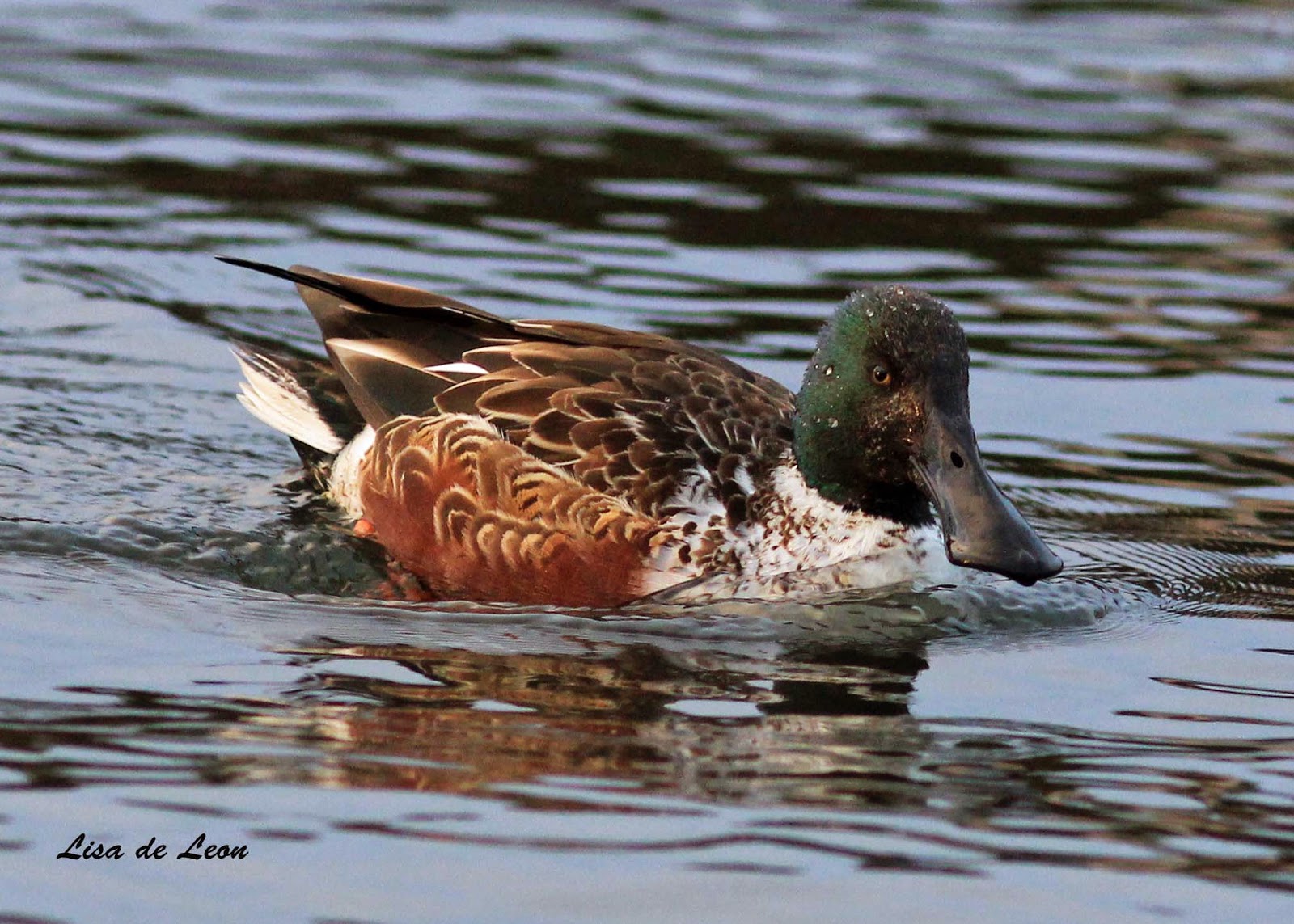Drawn to the water's edge at Cape Spear by the sight of two large rafts of Common Eider, I became enthralled by their amazing behaviour. They lifted off several times flying further out to sea.
Then, as if a creeping monster, they would weave a chain back to shore.
Some, a little more impatient, would fly ahead of the raft. Then, without notice, they would all disappear under the water and vanish altogether. Just awesome!
Having a great opportunity to look them over closely as they hung close to shore, I was able to see many variations.
All five field guides I frequently reference show three variations of the male Common Eider and only one plumage for the females. Well, I saw much more than that! This shot shows a very pale female. It made me look closely wondering if it were a female King Eider, but the shape of the head, the length of the bill and the barring on the back tell me this has to be a Common.
This image shows two very gray females. Is it possible these two birds are subspecies of the Common Eider? Among the huge flock, I saw four such birds.
There are two typical immature male Common Eider in this shot. There is another showing remnants of eclipse plumage. I read that it is somewhat common for the first molt to not completely transition the plumage to 1st winter.
This shot shows the same bird just below the gull.
This shot of the two pale, female eider better shows the barring across the back and on the underside of these birds. Without a scope, I find the unusual birds with my binoculars and follow up with a photo to zoom in more closely to see the details. For me, this works well as I can review the images at length for study.
These are three immature male Common Eider. Each one is slightly different from the other. Imagine if a pocket field guide had to show all the variations....
There was one individual male that seemed caught between immature plumage and adult plumage. I guess it will just have to wait for its spring molt to finish the job.
The immature male actually has two tones on the face with the darker color being on the lower face and the cap being somewhat lighter, the reverse of its adult plumage. This difference is better seen in the bright sunlight.
On the second day of viewing the sun was shining creating a whole new experience for viewing. While the photos are worse, the actual experience of seeing this mass of birds on the sun-lit water was stunning.
As the birds played in the surf, a pale female stands out in the lower left of this shot.
For hours these ducks continued to come and go for no apparent reason. However, it was clear they were feeding when near shore. What goes on under the water when the birds are out of sight? Well, these large ducks typically dive from 3 to 20 meters and feed mainly on crustaceans. I found it interesting, too, to learn they eat their favorite food, mussels, whole and crush the shell with their large gizzard.
Studying eider is challenged by the constant movement of the birds, the swell of the ocean, the over-powering sunshine, the darkness of cloud cover, the cold, the wind, the distance, and the limitations of optics. Sometimes, it is good to just settle into a sheltered area and enjoy the wondrous spectacle the way nature intended.
Also seen during the two visits: 1 Dovekie, 1 Black Scoter, 1 Northern Pintail, 10 Black Guillemots, 36 Purple Sandpipers, 1 Dark-eyed Junco and 1 small bird with the junco that I never saw well.














































